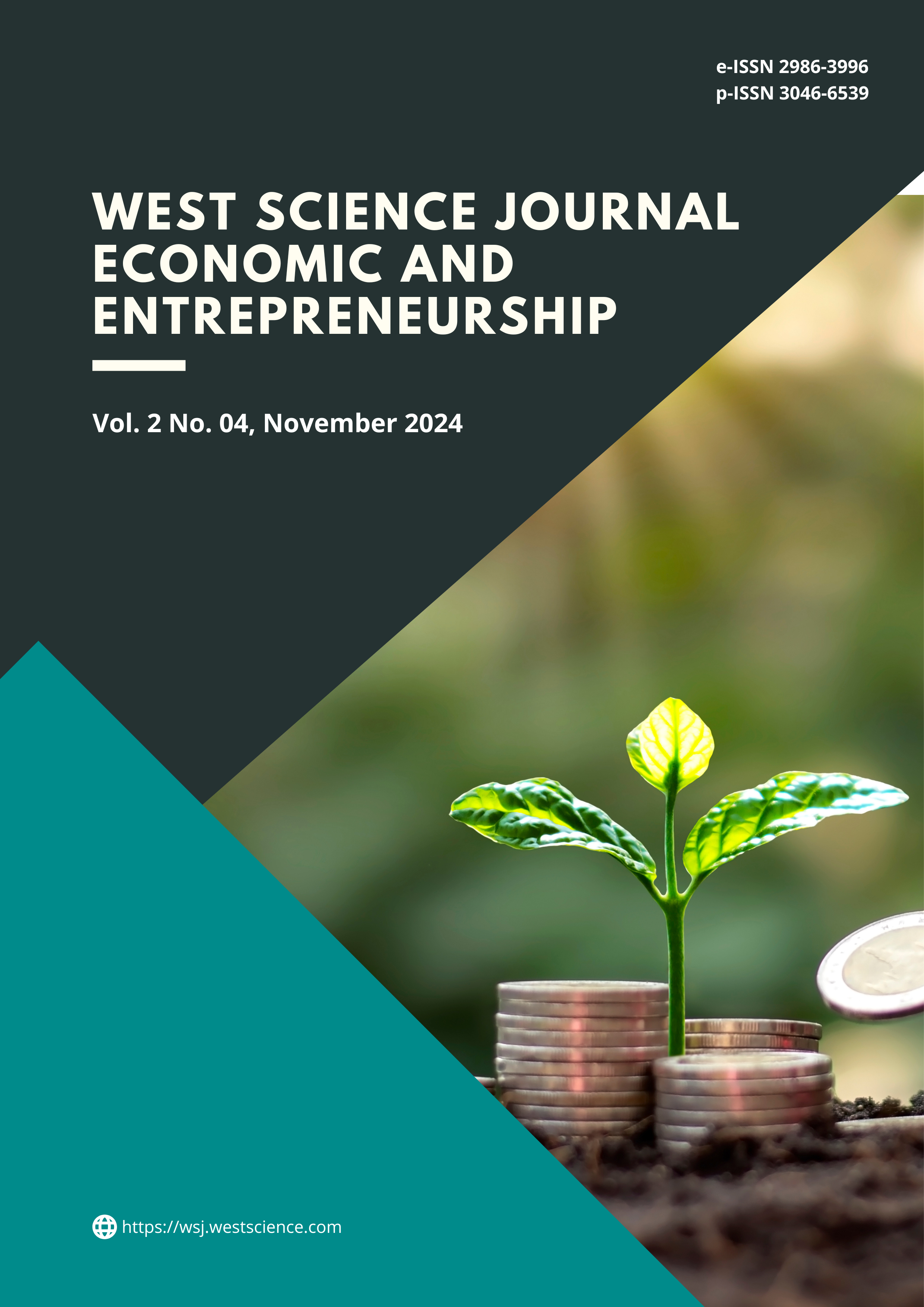Bibliometric Analysis of the Creative Economy: Exploring Key Themes and Research Developments
DOI:
https://doi.org/10.58812/wsjee.v2i04.1383Keywords:
Creative Economy, Bibliometric Analysis, VOSviewerAbstract
This study utilizes bibliometric analysis and network visualizations to examine the evolution and current state of creative economy research over the past two decades. By analyzing keyword co-occurrence and co-authorship networks, we identify central themes and trace collaborative patterns among researchers globally. Our findings highlight the critical roles of urban planning, sustainability, and economic development as recurring focal points within the creative economy discourse. International collaboration networks further reveal the United States, United Kingdom, and Germany as central hubs, facilitating significant scholarly exchange and driving research innovations. Temporal trends in publication volumes exhibit a marked growth in interest until 2022, followed by a slight decline, suggesting a phase of consolidation in the field. This study underscores the importance of creative industries in urban and regional development and points towards the necessity for innovative research approaches in the post-pandemic era, emphasizing technology integration and sustainability.
References
L. Chapman and E. Howkins, “Developing a learning culture,” Nurs. Manag. (through 2013), vol. 8, no. 4, p. 10, 2001.
U. N. C. on T. and D. (UNCTAD), “Creative Economy Outlook: Trends in International Trade in Creative Industries.” UNCTAD Geneva, 2018.
R. Florida, “The rise of the creative class,” Brill. Audio, 2002.
H. Bakhshi, A. Freeman, and P. Higgs, “A dynamic mapping of the UK’s creative industries,” 2013.
C. De Beukelaer, “The UNESCO/UNDP 2013 creative economy report: perks and perils of an evolving agenda,” J. Arts Manag. Law, Soc., vol. 44, no. 2, pp. 90–100, 2014.
J. Hartley, “Creative industries,” First Publ., 2005.
N. Garnham, “From cultural to creative industries: An analysis of the implications of the ‘creative industries’ approach to arts and media policy making in the United Kingdom,” Int. J. Cult. policy, vol. 11, no. 1, pp. 15–29, 2005.
O. Ellegaard and J. A. Wallin, “The bibliometric analysis of scholarly production: How great is the impact?,” Scientometrics, vol. 105, pp. 1809–1831, 2015.
A. J. Scott, “Creative cities: Conceptual issues and policy questions,” J. Urban Aff., vol. 28, no. 1, pp. 1–17, 2006.
J. Howkins, The creative economy: How people make money from ideas. Penguin UK, 2002.
C. De Beukelaer, “Creative industries in ‘developing’ countries: Questioning country classifications in the UNCTAD creative economy reports,” Cult. Trends, vol. 23, no. 4, pp. 232–251, 2014.
S. Cunningham, “Creative industries as a globally contestable policy field,” Chinese J. Commun., vol. 2, no. 1, pp. 13–24, 2009.
D. Hesmondhalgh and S. Baker, Creative labour: Media work in three cultural industries. Routledge, 2013.
C. Mihaly, “Creativity: The psychology of discovery and invention,” New York, Harperperennial,“Modern Class., vol. 12, 2013.
G. Richards, “Cultural tourism: A review of recent research and trends,” J. Hosp. Tour. Manag., vol. 36, pp. 12–21, 2018.
B. E. Duffy, (Not) getting paid to do what you love: Gender, social media, and aspirational work. Yale University Press, 2017.
M. S. Gertler, “Rules of the game: The place of institutions in regional economic change,” Reg. Stud., vol. 44, no. 1, pp. 1–15, 2010.
M. Storper and M. Manville, “Behaviour, preferences and cities: Urban theory and urban resurgence,” Urban Stud., vol. 43, no. 8, pp. 1247–1274, 2006.
T. Flew, “The creative industries: Culture and policy,” 2011.
M. Banks and D. Hesmondhalgh, “Looking for work in creative industries policy,” Int. J. Cult. policy, vol. 15, no. 4, pp. 415–430, 2009.
R. Comunian, “Rethinking the creative city: the role of complexity, networks and interactions in the urban creative economy,” Urban Stud., vol. 48, no. 6, pp. 1157–1179, 2011.
A. Markusen, G. H. Wassall, D. DeNatale, and R. Cohen, “Defining the creative economy: Industry and occupational approaches,” Econ. Dev. Q., vol. 22, no. 1, pp. 24–45, 2008.
G. Waitt and C. Gibson, “Creative small cities: Rethinking the creative economy in place,” Urban Stud., vol. 46, no. 5–6, pp. 1223–1246, 2009.
R. Comunian and L. England, “Creative and cultural work without filters: Covid-19 and exposed precarity in the creative economy,” Cult. trends, vol. 29, no. 2, pp. 112–128, 2020.
G. Richards and J. Wilson, “Youth and adventure tourism,” in Tourism Business Frontiers, Routledge, 2006, pp. 40–47.
Downloads
Published
Issue
Section
License
Copyright (c) 2024 Loso Judijanto

This work is licensed under a Creative Commons Attribution-ShareAlike 4.0 International License.





















 Instagram
Instagram 